Timber Framing
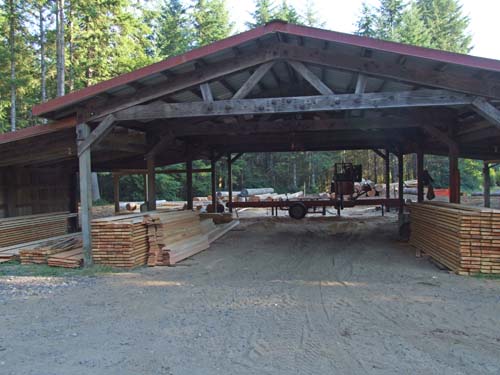
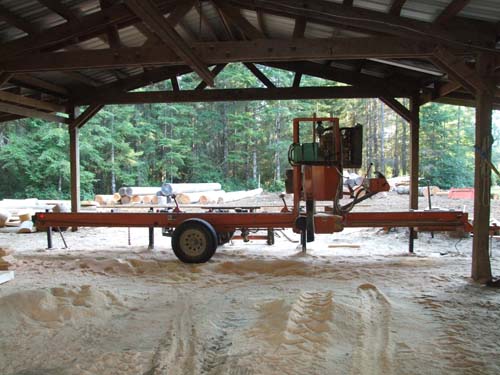
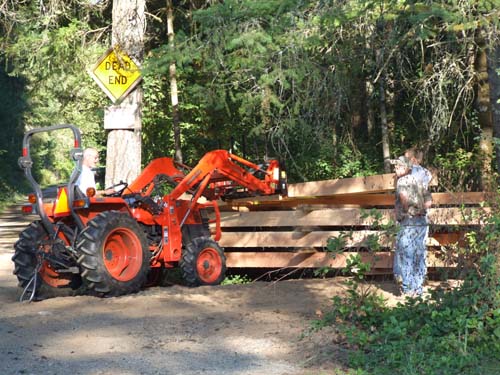
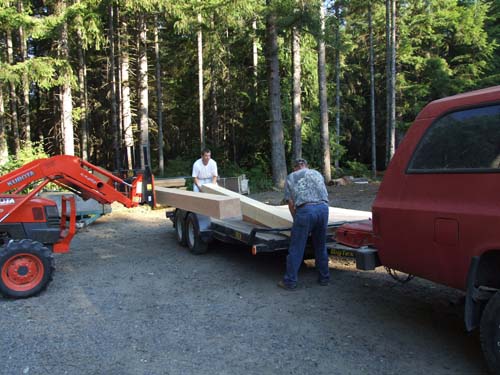
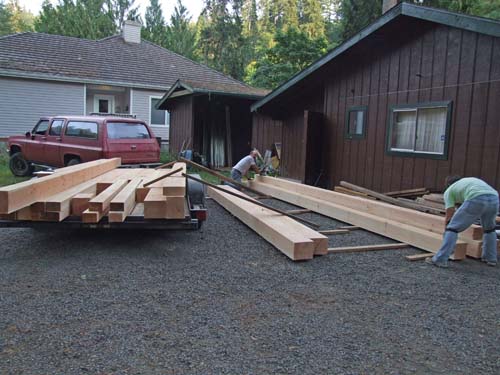
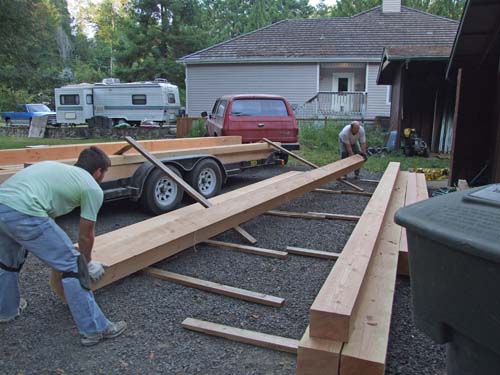
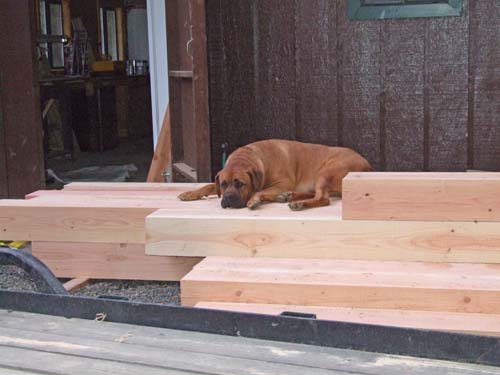
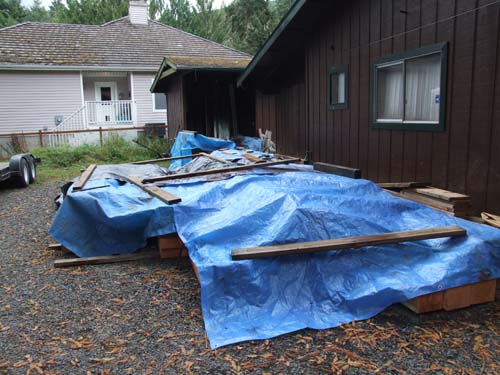
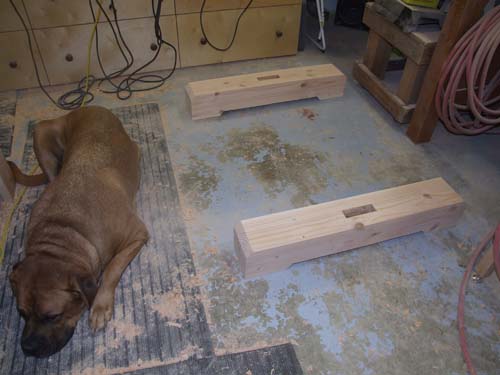
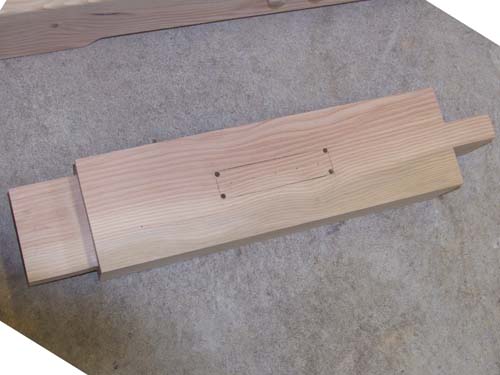
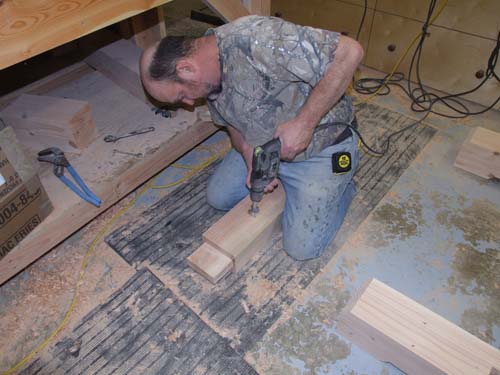
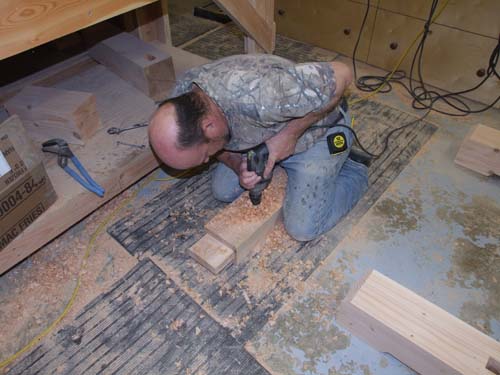
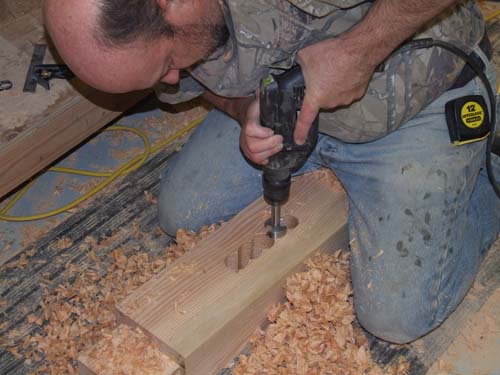
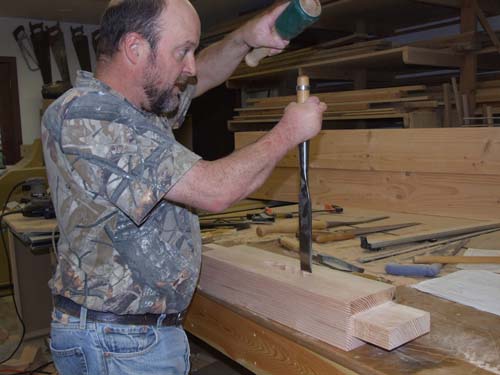
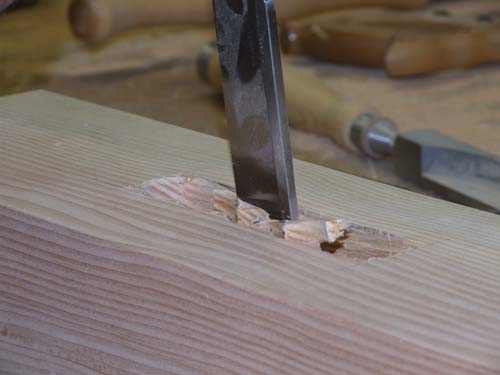
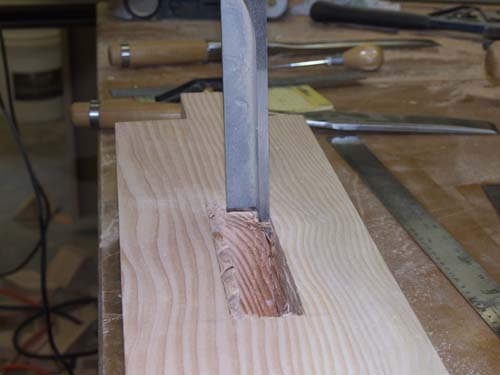
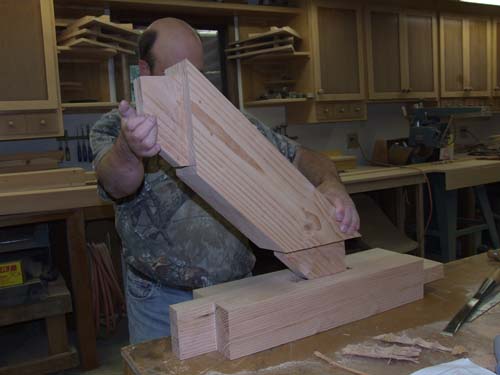
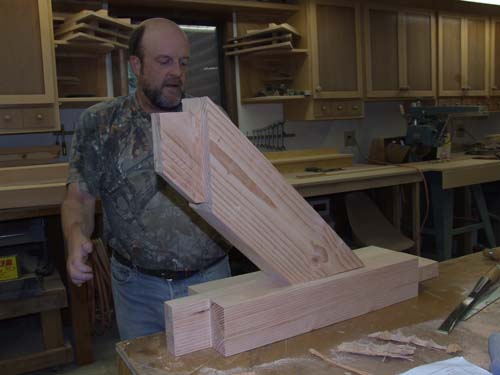
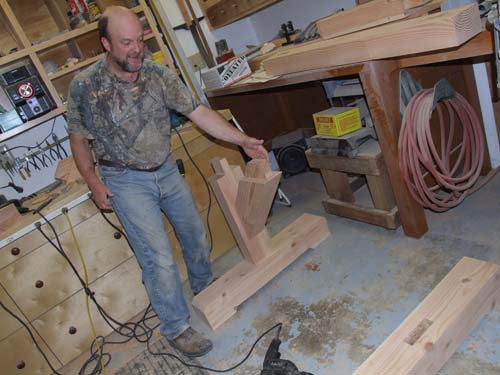
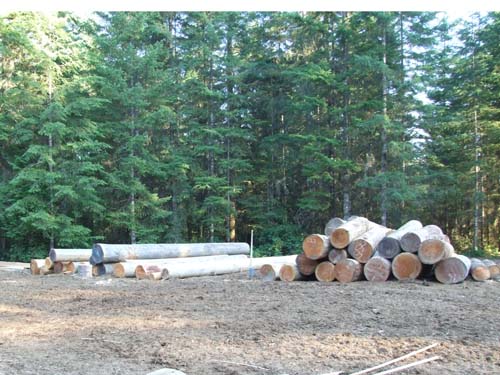
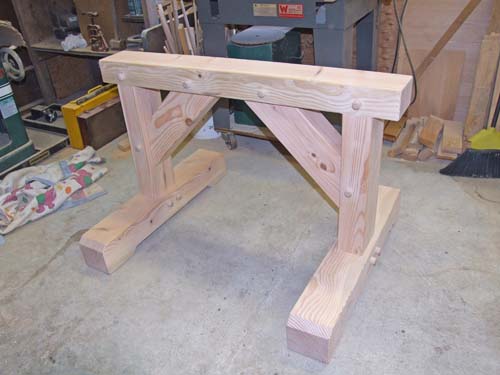
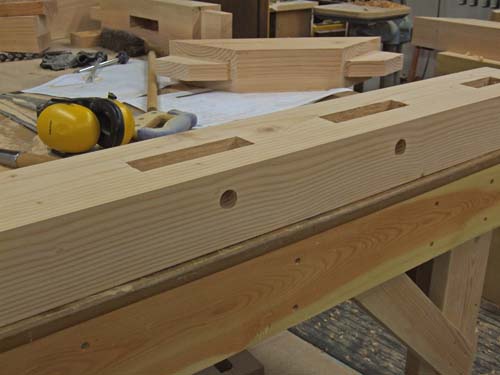
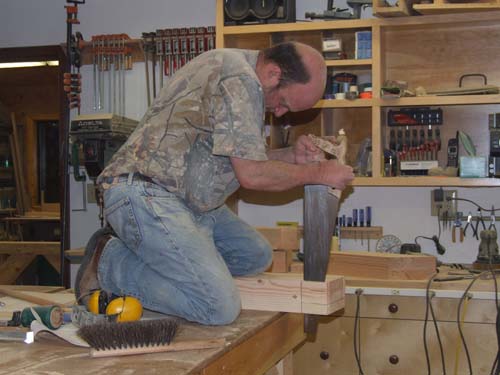
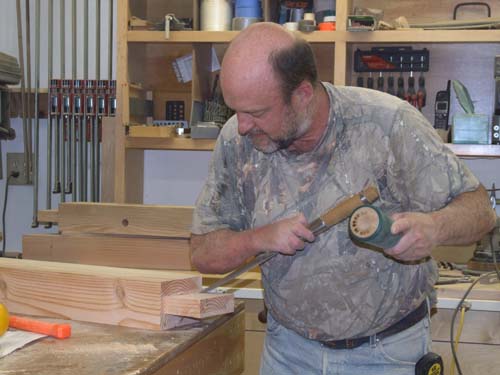
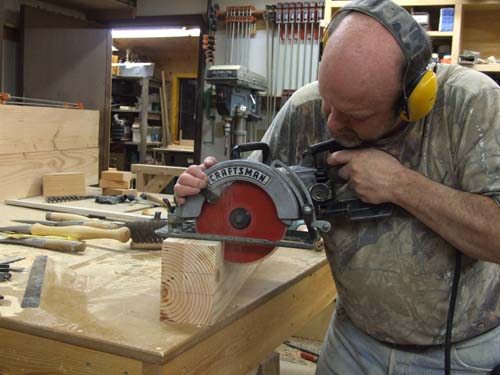
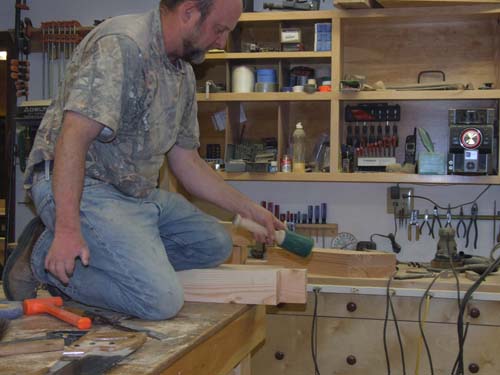
This
is the mill in Chehalis where our timbers were milled.
The
owner, Tim Rogerson uses a Wood Miser LT40 bandsaw to mill the
wood.
The
mill owner uses his tractor to help load the timbers.
8-16-10
Dan and Dan Z. loading the timbers on our trailer.
Dan and Dan Z. loading the timbers on our trailer.
8-17-19
Dan and son Dan unloading the timbers at home.
(Where's that tractor ???)
Dan and son Dan unloading the timbers at home.
(Where's that tractor ???)
Nothing
easy about this job.
Bullwinkle
likes the new timbers.
Three
loads completes the timber order for the shop building.
A
cousin of Dan's once told us that what a guy living in the Great Northwest
really needs is an acre with a roof over it. That could come in handy now with
fall in the air.
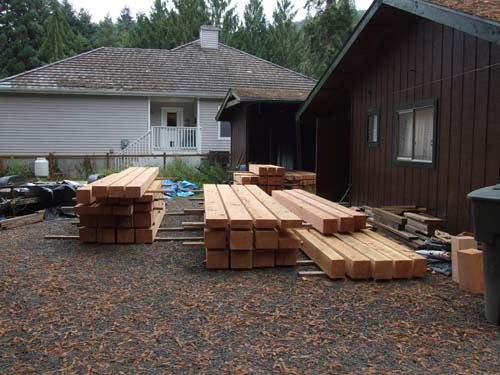
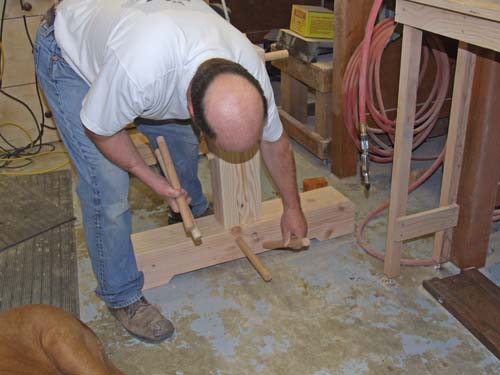
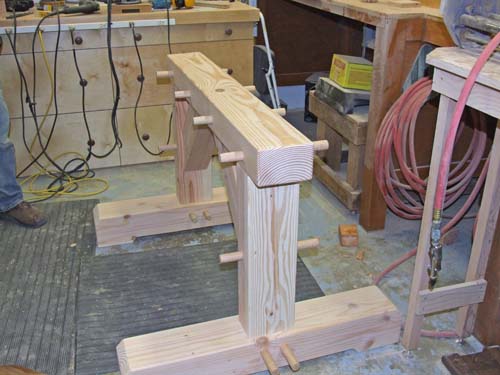
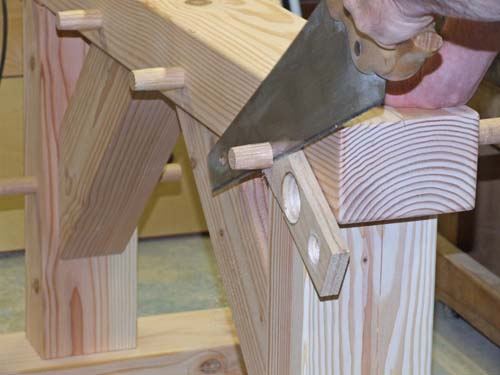
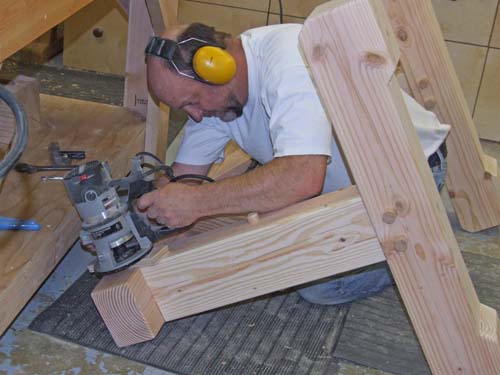
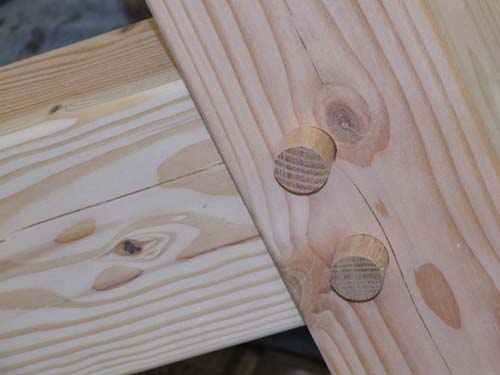
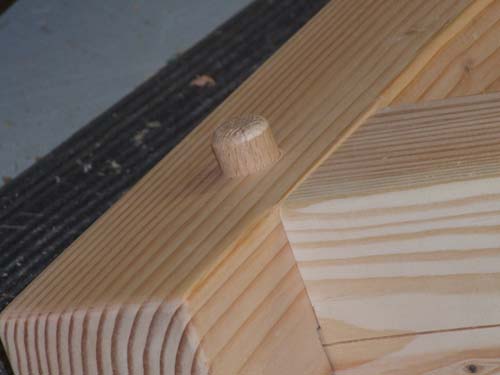
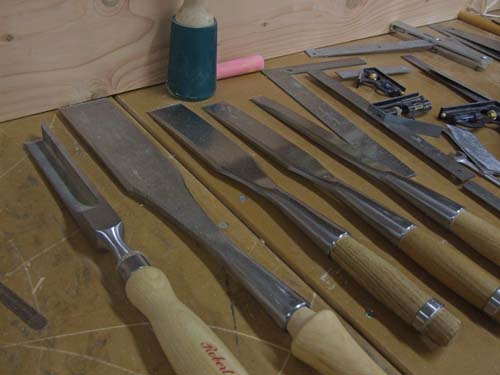
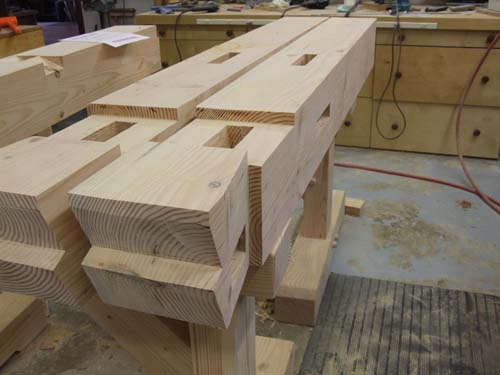
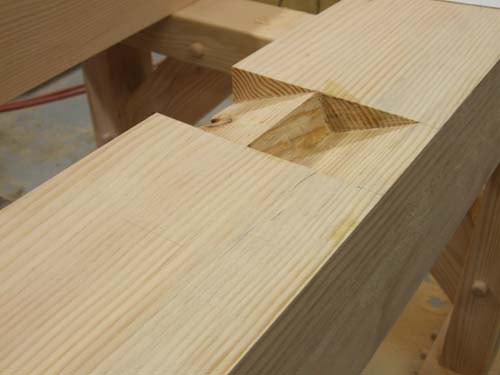
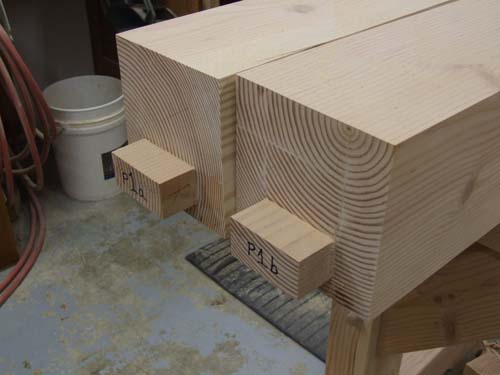
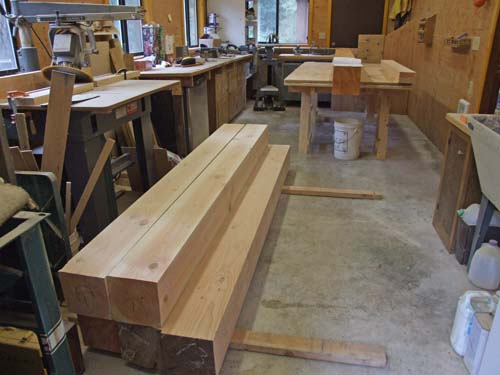
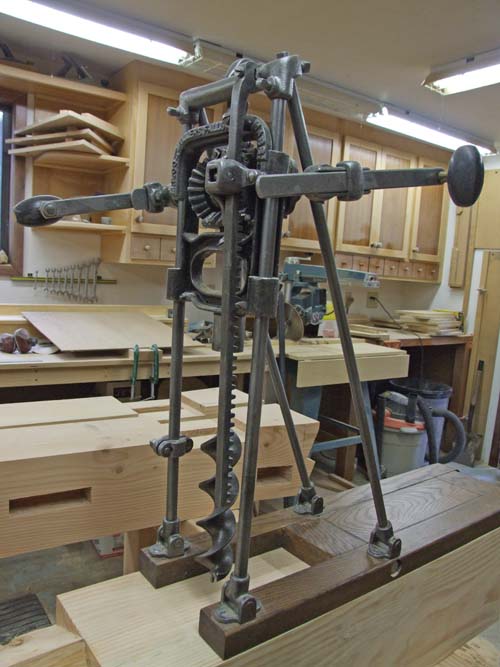
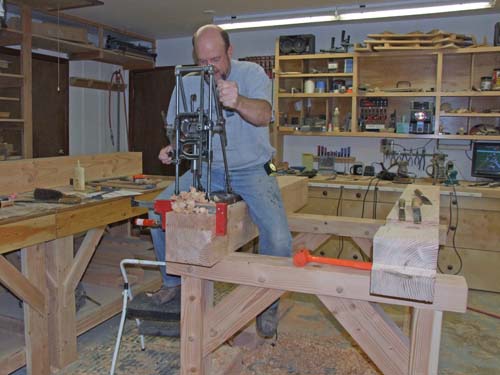
Dan's
chisels ready for his first project. He is going to build a set a saw horses to
give himself a little practice at timber framing.
He
uses his power saw for as much of the cut as he can.
And
finishes the cut with his hand saw.
With
a firm bap the excess wood from around the tenon comes off.
Then
just a little clean up with the chisel.
After
the mortise is marked out and the corners drilled......
he
uses his power drill to remove the bulk of the wood.
Then
chisels out the remaining wood.
A
corner chisel makes nice crisp corners.
Although
the mortise and tenon joint is one of the easier joints in timber framing, if it
is not correct, the pieces will not fit together correctly.
Oh
good. The brace tenon fits the leg mortise.
And
the leg tenon fits in the foot mortise.
Then
holes are drilled though the mortise for the pegs or "wooden nails".
The tenon is put into the mortise and the hole is marked.
The tenon is put into the mortise and the hole is marked.
Then
Dan drills the hole in the tenon slightly off center so when he drives the peg
in, it draws the pieces tight. This technique is called "draw boring".
This
baby is rock solid!
The
pegs can be cut flush or left a little proud.
Dan
routes the edges of the pegs and timbers for a final touch.
Nice
saw horses. Now lets build a shop.
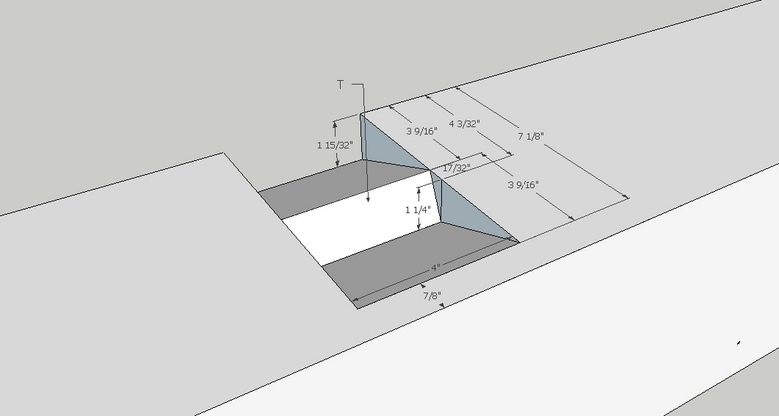
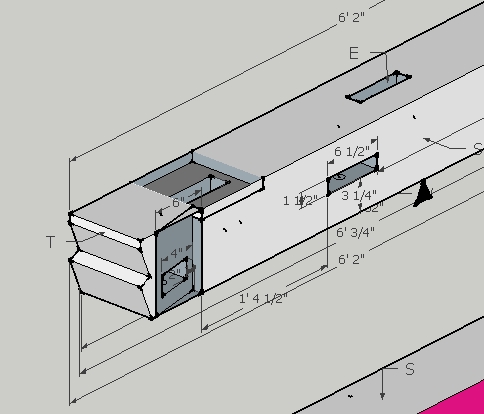
The
timbers are brought into the small shop and planed and sanded (thanks
Mike).
Then
using a plug in program to Google Sketchup, created by Clark Bremer, I make
a timber cutting plan.
Dan
has some how figured out how to cut these joints. These are two of the posts
with their many different joints.
This
joint is called a "step-lap rafter seat". This one is located
in a girt.
After
each piece is completed it is labled to later be assembled in its frame.
One
of the tools Dan uses is called a Miller Falls Boring Machine. It is used for
boring holes for the large mortises. They don't make these anymore, but Dan
found a guy, Tom Perkins, who reconditions antique ones and sells
them.
It's
a good thing Dan enjoys working in the shop or this could seem like work.
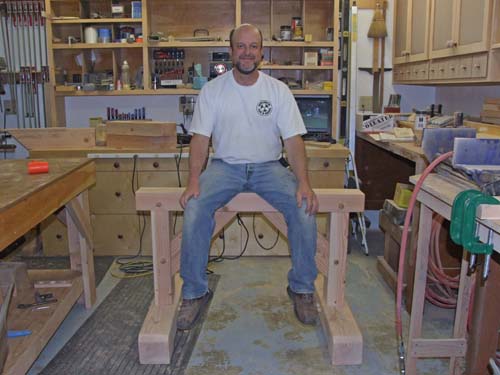
The
posts are the most difficult parts to make, and it takes most of the day to make
one.
There
are beautiful timbers hiding in this pile of logs.
We took a
little break for hunting season, holidays, and because we were feeling
a little burned out. Dan got back out in the shop working on the timbers for
most of January. Today he starts his tax season work so everything is now on
hold till mid April.
9-14-10
Back to 2010